Are you looking for the perfect blinds for your office space but are torn between horizontal and vertical blinds? Well, it is quite natural to be confused about picking the right window dressing for your office, especially when there are a plethora of options to choose from. So, when you are looking for the right type of blinds, here is a checklist that will help you opt for the blinds that best suit your requirements.
Horizontal and vertical office blinds are the most popular choices in the realm of window dressing, due to a host of benefits that they offer. Before we highlight the differences between the two, there are two similarities that make them tough competitors. Firstly, both horizontal and vertical blinds for office do a great job when it comes to blocking UV rays, thus helping you maintain a comfortable room temperature. Secondly, both blinds can be crafted from a variety of materials such as PVC, jute, fabric, vinyl, wood blinds, etc; which further adds to the variety of these blinds.
Blinds are an essential part of the furniture for the office. However, with so many options, which blinds should you choose? How should they hang?
It would help if you first decided whether you want your new or replacement window coverings to hang horizontally or vertically. Vertical blinds go from the top down, whereas horizontal blinds move from the left to the right. Your home’s windows can agreeably accommodate both. This post will discuss the differences between vertical and horizontal window blinds, their benefits and more.
Also read: Why is it Important to Dress Your Exteriors with Window Shades and Blinds
So, while picking the perfect horizontal or vertical office blinds dealers in Delhi for your windows, here are three things that you must take into consideration:
- What is the size of your windows?
- What are the opening and closing mechanisms of the windows?
- What is the décor theme of the room?
With these points in mind, analyze the differences listed below and decide for yourself!
Points Of Difference Between Vertical And Horizontal Window Blinds:
1. Maintenance
Picking the right type of blinds for your windows depends largely on their cleaning and maintenance. For retaining the lifespan of your blinds, you must clean them frequently. Cleaning isn’t a difficult task, but the time taken to clean these blinds is the difference here. When compared to vertical office blinds, it takes time to clean horizontal blinds. While the vertical blinds can be cleaned with one single sweep, the horizontal blinds come with various other mechanisms attached, which make them difficult to clean.
When compared to horizontal blinds, vertical blinds need much less maintenance. Because they are raised, the slats are less prone to collect dust and are simpler to clean. Plastic or faux wood vertical blinds are more durable and won’t warp or crack when exposed to moisture. On the contrary, because of their design, horizontal window blinds are a pain to maintain and keep spotless.
2. Compatibility
Picking the best blinds for your windows largely depends on the size of your windows. If you have large windows in your room, then vertical blinds for the office are more compatible as they open sideways. On the other hand, horizontal blinds are best suited when you have smaller windows as they open up and down.
3. Direction of sunlight
The direction of sunlight is also a key factor when it comes to picking the right blinds for your professional setting. Generally, for windows that face the east or west direction, vertical window blinds are preferred. On the other hand, for windows facing north or south, horizontal blinds are implemented.
4. Size of slats
When compared to horizontal blinds, the size of the slats of vertical window blinds is larger. Also, while the slats of horizontal blinds don’t touch the floor, those of vertical blinds do. So, depending on the setting of your office, you can decide for yourself as to which type suits best. You can pick from a huge variety of vertical blinds for offices in Delhi and enhance the beauty of your office.
5. Privacy
Though vertical window blinds prove to be effective in offering sun protection, they can often allow unwanted eyes that might interrupt your privacy. On the other hand, horizontal blinds offer better privacy as they allow very little light to pass through. So, with horizontal blinds, there is much less exposure to your commercial space.
6. Window Size
The overall size of your windows is the first and most crucial consideration. Vertical blinds are the most effective technique to cover a large window, while horizontal blinds are the greatest option for smaller windows. Vertical blind tracks may cover a lot of ground. This contributes to the uniform and well-organized appearance of the large windows. However, horizontal blinds are better for narrow windows as it’s possible to see across the whole width of a narrow window if the blinds are raised. In this way, the limited area of the window is optimally used. Remember that larger windows benefit more from vertical window coverings, while smaller windows may use horizontal ones.
7. UV Exposure and Seclusion
The second factor to consider is how much solitude and sunshine you want. Since the slats of vertical blinds may overlap and block the light, they are preferable to horizontal window blinds. You may hang them to obstruct the outside view or leave a little border on each side. Vertical blinds allow less light or provide as much privacy as horizontal blinds.
8. Scrubbing
Depending on their orientation, horizontal and vertical blinds have varying care requirements. Vertical blinds have larger bars, making them simple to dust. Each slat is independently fastened, making replacing a damaged slat simple. The track’s functionality may remain the same with time and usage.
Since the slats of horizontal blinds are in number and closer together, they take more effort to dust than their vertical counterparts. Wires may wear out and break regardless of how frequently they are used. The availability and reliability of flexible alternatives have improved greatly in recent years.
Also read: Top 3 Office Blinds That Bring Style and Security to Your Workplace
What Are the Benefits of Vertical Blinds and Horizontal Blinds for Offices?
Vertical Blinds
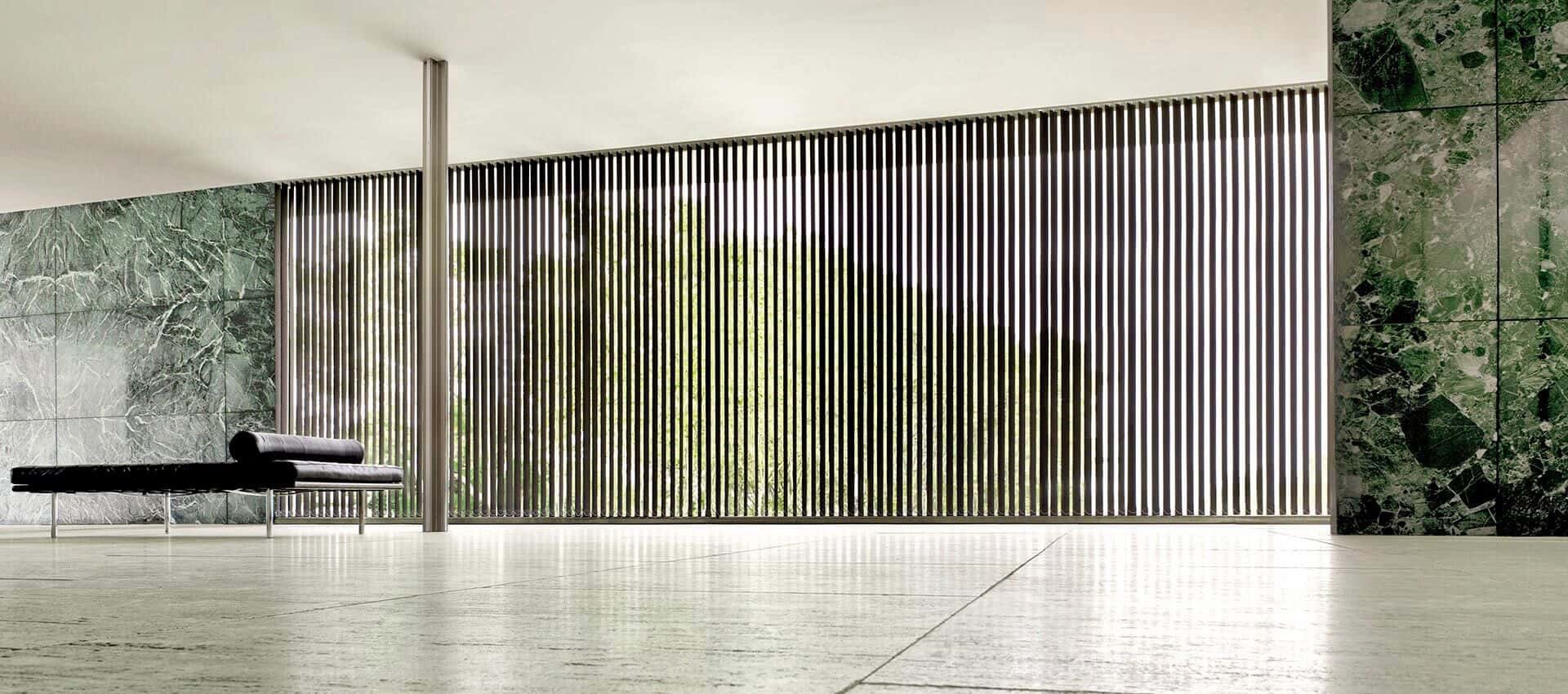
1. Better covering Solution
Sliding glass doors and large windows give them a nice aesthetic. It is possible to reposition horizontal blinds to cover large windows and sliding glass doors, but this is usually not worth the effort. Since they can be extended to cover even the largest areas, vertical blinds are a practical solution for covering many windows and doors.
2. They can be quickly and easily maintained.
Vertical blinds are simpler to maintain than horizontal ones since PVC and faux wood materials are water-resistant. It’s more common for horizontal blinds to collect dust and grime than vertical ones. Cleaning agents won’t fade the color or cause stains, so feel free to use more.
3. They let in less light than usual.
One vertical blind could block more light than many of the biggest custom-made horizontal blinds simply because its slats are larger and taller. Also, horizontal blinds are much more expensive than their vertical counterparts.
Horizontal Blinds
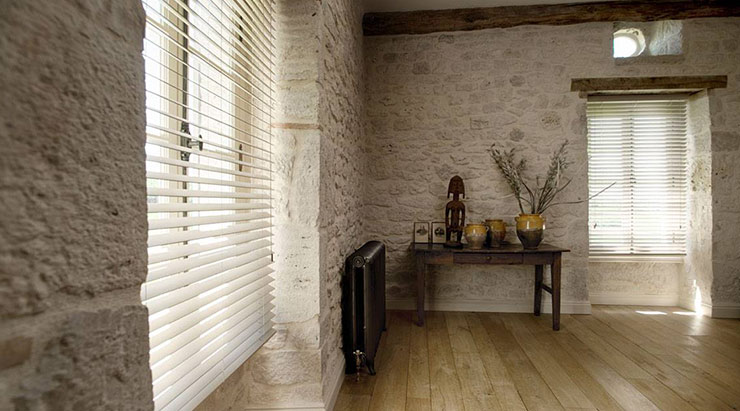
1. They give you a sense of security.
When opened or closed, vertical blinds create gaps in the window treatment. This is a drawback of installing vertical blinds. The likelihood of an outsider peeping into your house or company is much reduced if you install horizontal blinds.
2. They fit well in slender, high-up openings.
Horizontal blinds are preferable for tall, narrow windows due to their design.
3. They avoid dust.
Horizontal blinds may be an option to avoid dust and filth accumulating at the bottom of your window treatments due to their placement on window sills rather than the floor.
4. Replacement concerns.
They may go for a long period without being replaced. In contrast, due to regular usage and a track with multiple moving elements supporting them, vertical blinds will eventually need to be replaced or repaired.
Conclusion
While horizontal and vertical blinds are fundamentally different, they share many design elements. Both come in a plethora of designs, patterns, and materials. You may create whatever atmosphere you choose with them. The amount and direction of light entering a room may be altered simply by adjusting the blinds.
Take precise measurements of your window openings before going blinds shopping. The ideal spot for measuring and installing blinds may change depending on the design and style you’re going for. Consulting a professional before purchasing and trimming your blinds may save time and money.
So, now that you have a lot of points to compare, you can easily pick the best blinds for your office, and redesign your windows. So, pick from the best Vertical blinds Delhi, and thank us later!
FREQUENTLY ASKED QUESTIONS
1. What are the benefits of using horizontal window blinds?
Covering your windows is a smart move. And blinds are affordable and available in various colors to complement any decor. In addition to preventing overheating, these features also shield occupants from the sun’s harmful ultraviolet (UV) rays, reduce ambient light (helping people get a better night’s rest), increase thermal efficiency (reducing heating and cooling bills), and simplify upkeep.
2. How do vertical Venetian blinds differ from horizontal blinds regarding functionality and aesthetics?
Vertical Venetian blinds are oriented and move differently than horizontal blinds. While horizontal blinds revolve horizontally and raise, vertical blinds operate by turning vertically and may be pulled to one side. Vertical blinds have a sleek, contemporary appearance, while horizontal blinds have a more conventional, traditional aesthetic.
3. Are there any specific considerations when selecting window blinds for an office environment?
Think about things like light management, privacy, durability, simplicity of maintenance, and aesthetics when choosing window blinds for an office setting. Choosing blinds that can effectively control light, provide privacy, survive repeated usage, and match the business’s interior design is critical.
4. Can vertical Venetian blinds be a suitable choice for office spaces?
For offices, Vertical Venetian blinds might be a good option. They provide superior privacy, adaptability, and light control. They give a modern appearance that works well in many office environments and are perfect for big windows or sliding glass doors due to their vertical position.
5. What are some popular materials used in manufacturing horizontal blinds for windows?
Aluminium, imitation wood, and vinyl are common materials for horizontal window blinds. Wood and imitation wood blinds provide a sense of refinement, while aluminium blinds are lightweight and long-lasting. Vinyl blinds are affordable and excellent for areas with a lot of dampness.
6. What are the main differences between horizontal and vertical blinds regarding light control and privacy?
By precisely adjusting the angle of the slats, horizontal blinds give more flexibility in regulating privacy and light management. Vertical blinds provide greater coverage for big windows and sliding glass doors but may offer a little less exact level of light control.
7. Are any specific design considerations for choosing vertical blinds in an office setting?
When selecting vertical blinds for an office environment, consider the size and orientation of the windows, the quantity of natural light sought, the degree of seclusion required, and the overall beauty of the area. Make sure the blinds are simple to use and easy to maintain.
8. What are the maintenance requirements for horizontal blinds, particularly in a high-traffic office environment?
In a busy office setting, horizontal blinds need to be regularly dusted or vacuumed to eliminate dust, sometimes spot-cleaned with a mild detergent, and inspected for any broken or damaged slats that could need to be replaced. The blinds can be kept clean and in excellent operating order with regular maintenance.
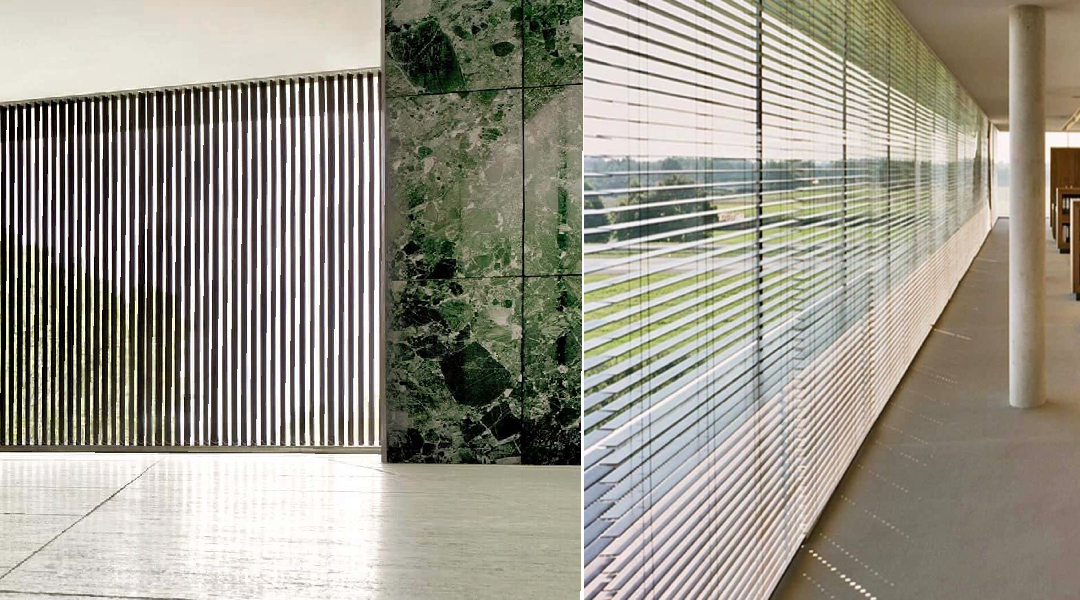
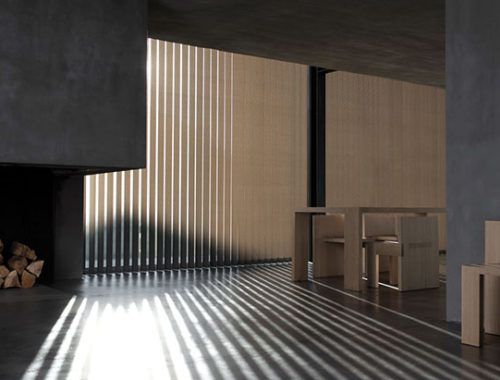
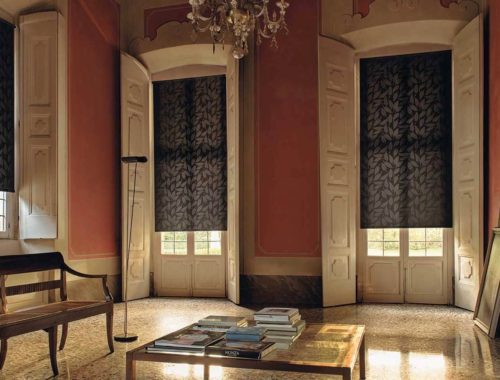
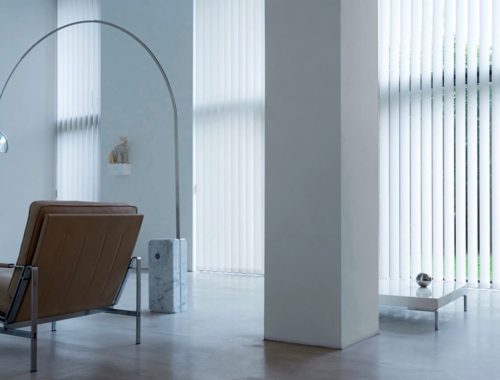
No Comments